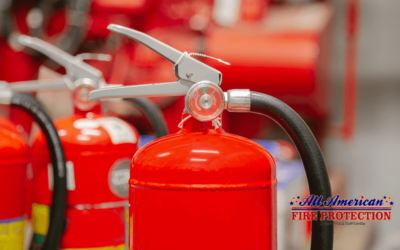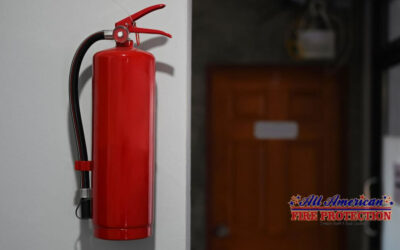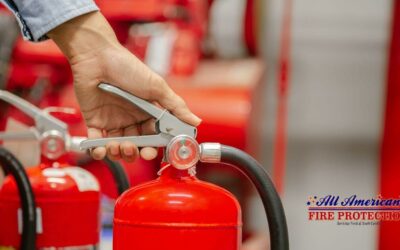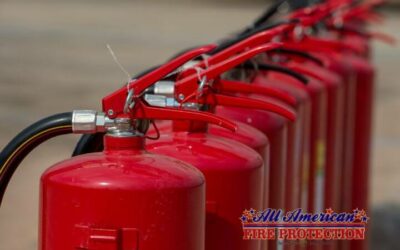Fire safety is a critical concern for every home, business, and public space. Having the right fire extinguisher on hand can make all the difference in preventing property damage and saving lives. One of the most versatile and effective types of fire extinguishers is the powder fire extinguisher. In this comprehensive guide, we’ll explore everything you need to know about powder fire extinguishers, including their types, uses, advantages, and limitations, to help you choose the right extinguisher for your needs and ensure optimal fire safety. All American Fire Protection provides these essential fire extinguishers among their extensive range of fire safety services.
Powder Fire Extinguishers Safety Guide
Powder fire extinguishers, also known as dry powder fire extinguishers, are a popular choice for their versatility and effectiveness in fighting various types of fires. These extinguishers can be used on Class A, B, and C fires, making them suitable for a wide range of environments. By understanding the capabilities and limitations of powder fire extinguishers, you can make informed decisions about your fire safety equipment and be better prepared to handle fire emergencies.
Types of Powder Fire Extinguishers
There are two main types of powder fire extinguishers: standard dry powder fire extinguishers and specialist dry powder fire extinguishers.
Standard Dry Powder Fire Extinguishers
Standard dry powder fire extinguishers are designed to combat Class A (combustible solids), Class B (flammable liquids), and Class C (flammable gases) fires. They are also effective on electrical fires involving equipment with a voltage up to 1000v. These extinguishers are filled with a fine powder, typically composed of monoammonium phosphate or sodium bicarbonate, which smothers the fire and interrupts the chemical reaction that fuels it.
Specialist Dry Powder Fire Extinguishers
Specialist dry powder fire extinguishers are designed for specific types of flammable metal fires. There are two main types:
- L2 powder extinguishers: These extinguishers are specifically designed for fires involving lithium, a highly reactive metal commonly used in batteries and electronic devices.
- M28 powder extinguishers: These extinguishers are suitable for fires involving other flammable metals, such as magnesium, sodium, and potassium.
Specialist dry powder extinguishers contain unique compounds that are effective in suppressing metal fires, which require a different approach than fires involving ordinary combustibles.
Uses of Powder Fire Extinguishers
Powder fire extinguishers are suitable for use in a variety of environments, but there are also situations where they should be avoided.
Suitable Environments
Powder fire extinguishers are ideal for open or outdoor areas where there is a risk of various types of fires. Some examples include:
- Garage forecourts: The presence of flammable liquids and vehicles makes powder extinguishers a suitable choice.
- Boiler rooms: Powder extinguishers can effectively combat fires involving flammable gases and electrical equipment.
- Workshops: The versatility of powder extinguishers makes them appropriate for workshops with multiple fire hazards.
- Fuel tankers: Powder extinguishers are recommended for vehicles carrying flammable liquids or gases.
Unsuitable Environments
However, powder fire extinguishers have some limitations and should not be used in certain situations:
- Enclosed spaces: The fine powder can spread easily, obscuring vision and posing an inhalation risk in confined areas.
- Cooking oil fires: Powder extinguishers are not effective against Class F fires involving cooking oils and fats, as the powder can cause the oil to splash and spread the fire.
- Electrical fires over 1000v: For high-voltage electrical fires, CO2 extinguishers are recommended instead.
- Flammable metal fires: Unless using a specialist dry powder extinguisher designed for the specific metal, powder extinguishers should not be used on flammable metal fires.
How Powder Fire Extinguishers Work
Powder fire extinguishers work by smothering the fire and creating a barrier between the fuel and the oxygen source. The fine powder is propelled from the extinguisher and covers the burning material, effectively starving the fire of oxygen and interrupting the chemical reaction that sustains it.
It’s important to note that while powder extinguishers are highly effective at suppressing flames, they do not provide a cooling effect. This means that there is a potential for re-ignition if the heat source is not completely removed or the area is not properly ventilated after the extinguisher has been used.

Identifying Powder Fire Extinguishers
Powder fire extinguishers are easily recognizable by their blue label that prominently displays the word “Powder.” Additionally, there should be an extinguisher ID sign nearby that clearly indicates the presence of a powder extinguisher and the classes of fire it is suitable for.
Advantages of Powder Fire Extinguishers
Powder fire extinguishers offer several advantages that make them a popular choice for fire safety:
- Versatility: Powder extinguishers can be used on a wide range of fire types, making them suitable for many environments.
- Quick suppression: The smothering effect of the powder can quickly suppress flames, minimizing fire damage.
- Specialist options: Specialist dry powder extinguishers are available for fighting flammable metal fires, which require specific compounds for effective suppression.
Limitations of Powder Fire Extinguishers
Despite their many benefits, powder fire extinguishers also have some limitations:
- Enclosed spaces: Powder extinguishers are not recommended for use in confined areas due to the potential for powder spread and inhalation risks.
- Re-ignition potential: As powder extinguishers do not provide a cooling effect, there is a risk of re-ignition if the heat source is not completely removed.
- Residue: The fine powder can leave a residue on surfaces, which may cause corrosion and be difficult to clean.
- Visibility and inhalation: The discharged powder can obscure vision and pose an inhalation risk, making it crucial to ensure a clear escape route before using the extinguisher.
Proper Use of Powder Fire Extinguishers
To ensure the safe and effective use of powder fire extinguishers, it’s essential to follow proper guidelines and precautions.
Safety Precautions
Before using a powder fire extinguisher, consider the following safety precautions:
- Ensure you have a clear escape route and maintain a safe distance from the fire.
- Do not use powder extinguishers in enclosed spaces, as the powder can obscure vision and pose an inhalation risk.
- Be aware of the potential for re-ignition and ensure the heat source is completely removed or the area is properly ventilated.
Step-by-Step Guide
When using a powder fire extinguisher, follow these steps:
- Pull the safety pin to break the tamper seal.
- Aim the nozzle at the base of the fire.
- Squeeze the handle to discharge the powder.
- Sweep the nozzle from side to side, covering the entire base of the fire until it is fully extinguished.
- For electrical fires, switch off the power source if it is safe to do so before aiming the extinguisher at the fire.
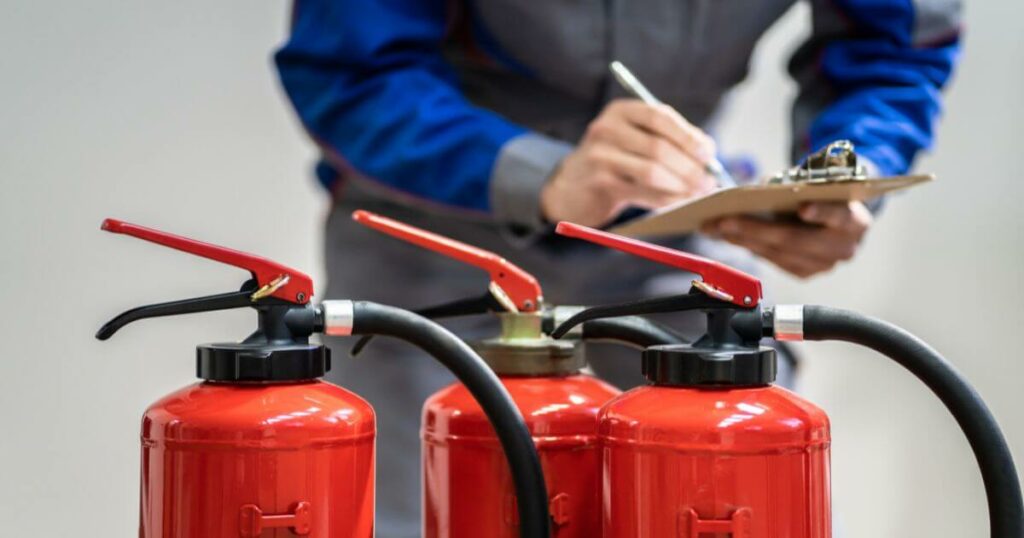
Maintenance and Inspection
To ensure your powder fire extinguisher remains in proper working condition, regular maintenance and inspection are crucial:
- Conduct monthly visual checks for any signs of damage, corrosion, or pressure loss.
- Have your extinguisher professionally serviced and inspected annually by a certified fire protection company.
- After any use, even if only partially discharged, have your extinguisher recharged or replaced immediately.
Complementary Fire Safety Measures
While powder fire extinguishers are a valuable tool in fire safety, they should be used in conjunction with other fire safety measures and equipment:
- Install smoke detectors and fire alarms to provide early warning in case of a fire.
- Have CO2 extinguishers on hand for electrical fire risks, as they are more suitable for use on sensitive electronic equipment.
- Develop and practice a fire evacuation plan to ensure everyone knows how to safely exit the building in case of an emergency.
- Regularly train employees or family members on the proper use of fire extinguishers and other fire safety procedures.
Allow All American Fire Protection to Effectively Take Care of Your Powder Fire Extinguishers
Powder fire extinguishers are a versatile and effective tool in the fight against various types of fires. By understanding their types, uses, advantages, and limitations, you can make informed decisions about incorporating them into your fire safety plan. Remember to choose the right extinguisher for your specific needs, follow proper usage guidelines, and regularly maintain your equipment to ensure optimal performance in case of a fire emergency.
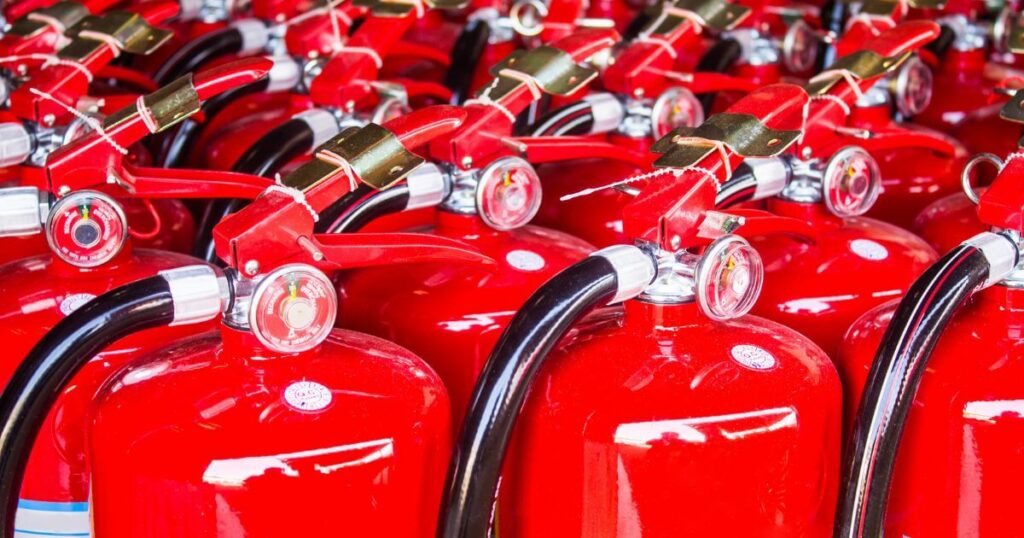
FAQs
Q: What is the difference between standard and specialist powder fire extinguishers? A: Standard powder fire extinguishers are suitable for Class A, B, and C fires, as well as electrical fires up to 1000v. Specialist powder extinguishers are designed for specific flammable metal fires, such as lithium (L2 powder) or other metals like magnesium and sodium (M28 powder).
Q: Can I use a powder fire extinguisher on a cooking oil fire? A: No, powder fire extinguishers are not suitable for cooking oil fires (Class F). The powder can cause the oil to splash and spread the fire. For cooking oil fires, use a wet chemical or Class F fire extinguisher.
Q: How often should I have my powder fire extinguisher serviced? A: It is recommended to have your powder fire extinguisher professionally serviced and inspected annually by a certified fire protection company. This ensures that your extinguisher remains in proper working condition and complies with local fire safety regulations.
Q: What should I do if my powder fire extinguisher has been used? A: If your powder fire extinguisher has been used, even if only partially discharged, it should be recharged or replaced immediately. Contact a professional fire protection company to have your extinguisher serviced and restored to full operational capacity.
Q: Are powder fire extinguishers safe to use in a small office or home? A: While powder fire extinguishers are effective against various types of fires, they may not be the best choice for small enclosed spaces like offices or homes. The fine powder can spread easily, obscuring vision and posing an inhalation risk. For these environments, consider using a clean agent or CO2 extinguisher, which leave no residue and are safer for use in confined areas.
For expert advice on selecting the right powder fire extinguisher for your needs and ensuring optimal fire safety, contact All American Fire Protection today. Our knowledgeable team will guide you through the process and help you develop a comprehensive fire safety plan. Visit our website or call us now to learn more.




